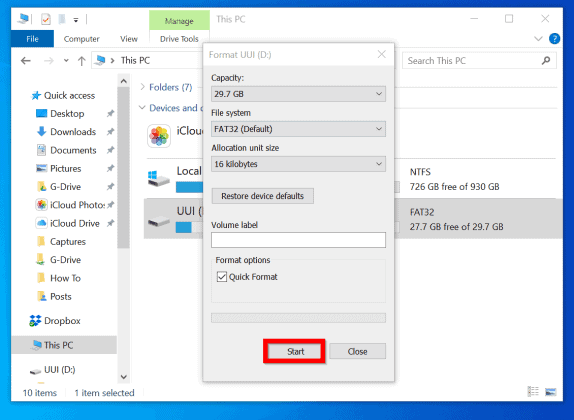
It is differential, scanning user's existing Windows 10 installation only downloading and installing those system files that have changed. Through some registry modifications users can at least for now disable UUP and get ESD version of the build upgrade, but it seems that this option might not be available in the future. Since Windows 10 Insider Build 14986 Microsoft has started to use new Unified Update Platform (UUP), which no longer offers the install.esd file (read more in this post). With it we could create DVD / USB install media to be used in clean, in-place and repair installs.
 Next, choose Start and wait for the Rufus to properly load ISO to your USB Flash Drive.Since beginning of Windows Insider program we geeks have had an possibility to convert the ESD file of new upgrade build to an ISO image ( tutorial). Check to Create a bootable disk and ensure that the ISO Image is selected from the drop-down, use the small drive icon to locate and choose the image. Then, choose the GPT partition scheme for UEFI and leave the File System & Cluster Size to default settings and label the drive.
Next, choose Start and wait for the Rufus to properly load ISO to your USB Flash Drive.Since beginning of Windows Insider program we geeks have had an possibility to convert the ESD file of new upgrade build to an ISO image ( tutorial). Check to Create a bootable disk and ensure that the ISO Image is selected from the drop-down, use the small drive icon to locate and choose the image. Then, choose the GPT partition scheme for UEFI and leave the File System & Cluster Size to default settings and label the drive.  After Rufus and the ISO have been downloaded open Rufus and choose the Device (USB) which should be used as your bootable media. You will have to get Rufus from this link ( here). You will need a program called Rufus which is a small utility to create bootable media for MBR and GPT Partitions. Now you will have to load this ISO file to your Flash Drive. Note: The Links should only be valid for 24 hours, so make sure to download the ISO before it expires. Simply select the suitable one for you and download the ISO It should load the next page for you where it will ask you which architecture of Windows would you like to download.
After Rufus and the ISO have been downloaded open Rufus and choose the Device (USB) which should be used as your bootable media. You will have to get Rufus from this link ( here). You will need a program called Rufus which is a small utility to create bootable media for MBR and GPT Partitions. Now you will have to load this ISO file to your Flash Drive. Note: The Links should only be valid for 24 hours, so make sure to download the ISO before it expires. Simply select the suitable one for you and download the ISO It should load the next page for you where it will ask you which architecture of Windows would you like to download. 

Now simply select Windows 10 and then select your Language then click “Confirm”. Once the page is reloaded the website should be a Mobile Version. Now click on the Mobile option to emulate the mobile version of this website and then reload the page. Now once you are on that website you will have to press the following set of keys “CTRL + SHIFT + I”. Once you do that it should open the Inspect Element tool. First of all, head over to this website ( here).








 0 kommentar(er)
0 kommentar(er)
